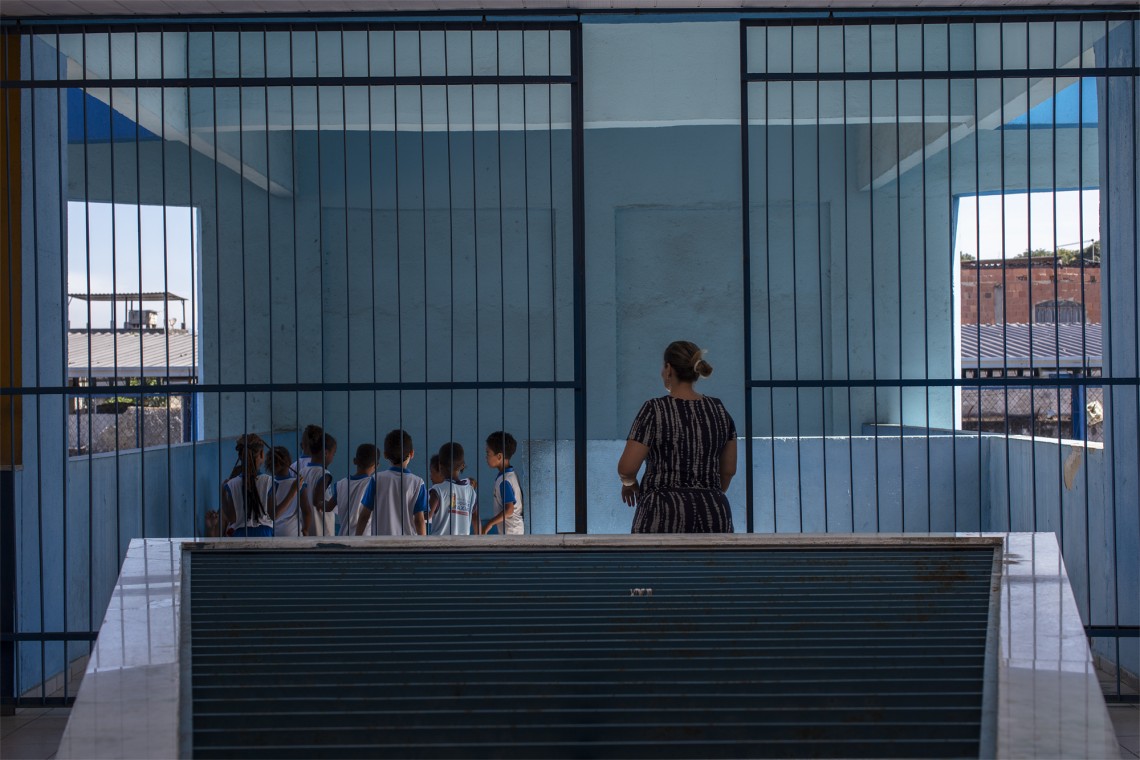
Brazil: armed violence in the cities and the Safer Access methodology

Urban Violence in Brazil
The armed violence and its most visible indicators have increased in cities in Brazil and in many countries in Latin America and the world: homicides, confrontations among armed groups, deaths and injury by stray bullets, among others.
In 2017, there were 63,880 intentional violent deaths in Brazil, according to the Brazilian Public Safety Yearbook.
The humanitarian consequences for the population are serious. The armed violence in the cities causes the closing of schools, health service units or other essential public services.
However, it is important to mention that this context is not described as an armed conflict according to the International Humanitarian Law (IHL) standards despite the serious impact of the humanitary consequences in the affected communities.
Municipal school in Duque de Caxias, state of rio de janeiro. Photo: M. CRUPPE/CICV
ICRC's action
The ICRC is concerned about the increasing humanitarian consequences from armed violence.
In Brazil, the work is done in partnership with the governments and other organizations. In 2009, after offering its services to the Federal Government, the ICRC initiated the Rio Project, implemented in Rio de Janeiro, in which developed specific actions for the population from the communities most affected by armed violence. In this context, the methodology Safer Access to Essential Public Services was formulated and, since then, it is successfully applied in other municipalities.
Safer Access (SAF)
Safer Access is a methodology used to reduce, mitigate and respond to the consequences from the exposure of population and professionals to armed violence contexts.
The Safer Access is based and was adapted from the ICRC's safety protocols, which were elaborated based on its wide working experience in contexts of armed conflict and violence. The methodology meets the policies and guidelines of the international rule ISO 31000.
Safer Access goals
- To protect lives, to promote safe environments and to strenghthen the resiliency of professionals from public institutions and from public services' structures, which work in areas affected by armed violence.
- To develop complete strategies of risk management, crises management, risk treatment and stress management through concrete actions to systematize the professionals' self-protection along with the secretariats which are responsible for provisioning public essential services.
- To promote knowledge, behavior and attitude change of professionals and public managers regarding living with armed violence related risks, therefore, making its management efficient and coherent.
- To improve general efficiency of the services and to optimize the use of human and financial resources.
- To widen the access to public essential services by promoting free access for the professionals to the communities and free acces for the population to schools and to service posts.
Main axes
- Analysis of the context and risks
- Risks approach
- Crisis management
- Stress management
Related areas
- Health
- Education
- Social care
Besides, some activities were developed with professional in other areas, such as sports and leisure, housing and human rights.
Cities where Safer Access methodology has been implemented

In a number of these municipalities, the project's rollout has been fully integrated between various government departments, enhancing risk management efforts. Since 2017, over 19,000 Health, Education and Social Care professionals have been trained in the Safer Access methodology.
Benefits and impacts involved in promoting access to essential public services
- Ensuring that services continue to be provided for people in areas that are most vulnerable to armed violence.
- Integrating management between various departments and services, and producing common strategies for reducing the impacts that armed violence has on providing services.
- Improving the internal organization and assignment of roles, including internal communication and coordination and teamwork.
- Empowering professionals, leading to greater job satisfaction and commitment.
- Managing the stress of professionals at various facilities, leading to a decrease in turnovers/ difficulties in placing employees.
- Decreasing response times to security incidents.

